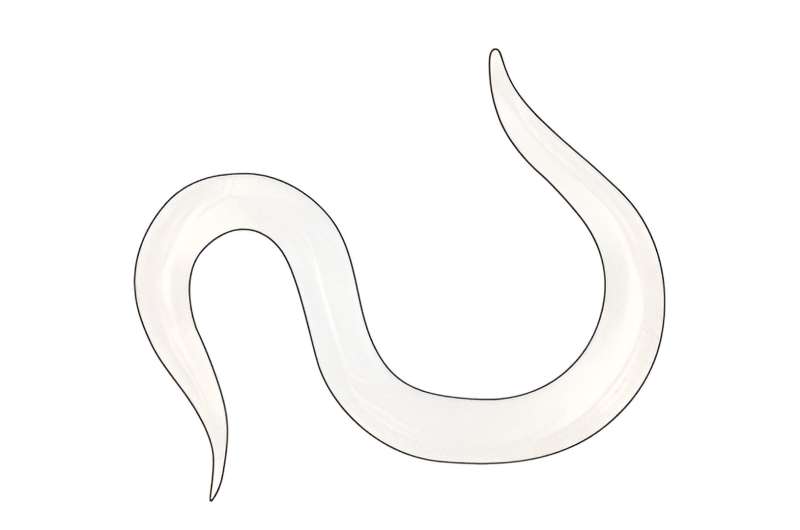This article has been reviewed according to Science X's editorial process and policies. Editors have highlighted the following attributes while ensuring the content's credibility:
fact-checked
trusted source
proofread
Novel nematode species, a relative of model organisms, discovered

A new nematode species has been discovered in soil-dwelling bees at the University of Tsukuba's Sugadaira Research Station. This species shares a close relationship with a model nematode Pristionchus pacificus used in developmental and evolutionary biology studies. Its unique physiological and ecological traits, such as a specific relationship with flower bees and hypoxia adaptation, make it a promising research material.
Nematodes, a diverse group of invertebrates, are believed to rival or even surpass insects in species count that have over a million known species. Phylum Nematoda includes harmful (parasites, agricultural, and forestry pests) and beneficial species (biocontrol materials, model organisms). However, with less than 30,000 identified species, our understanding of nematode diversity is incomplete. Hence, continuous collection from various environments is likely to reveal new, potentially, valuable species.
In a new study published in Nematology, nematode diversity surveys were conducted at the Sugadaira Research Station, Mountain Science Center, University of Tsukuba (Ueda City, Nagano Prefecture), located in a high-altitude, cold region. The aim was to identify nematode species consistently detected in the soil-dwelling, eusocial bee, Halictus (Seladonia) aerarius.
The nematode discovered was identified as a new species of the Pristionchus genus, an omnivorous nematode used as a model system in genome evolution, self-recognition, and developmental plasticity studies a phenomenon in which body structures change in response to the environment. Detailed morphological observations and molecular phylogenetic analysis led to its description as Pristionchus seladoniae.
P. seladoniae exhibits physiological traits, such as unstable growth on E. coli medium, commonly used for other Pristionchus nematodes, and a lack of plasticity under culture conditions.
Its ecological traits include continuous detection on soil bees and clumping on culture media, indicative of hypoxia adaptation. The species has the potential to be studied in the fields of genome biology, physiology, and environmental adaptation studies as a comparative material (satellite model) with model species.
More information: Natsumi Kanzaki et al, Pristionchus seladoniae n. sp. (Diplogastridae) isolated from a eusocial soil-dwelling bee, Halictus (Seladonia) aerarius, in Nagano, Japan, Nematology (2024). DOI: 10.1163/15685411-bja10326
Provided by University of Tsukuba





















